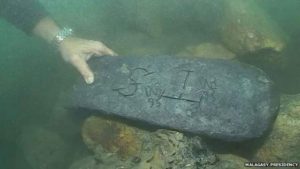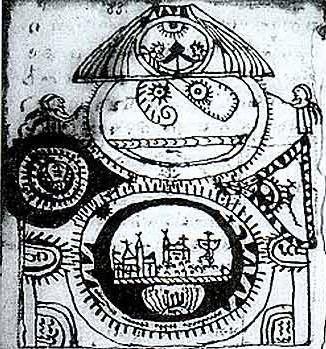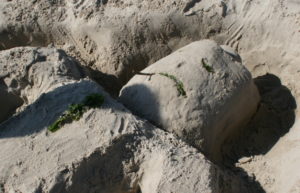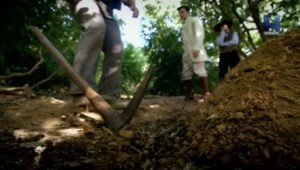A quick recap: a copy of the WW2 cipher was placed on the leg of two pigeons, one with ring NURP 40 TW 194 and the other with ring NURP 37 DK 76. But we haven’t been able to identify either of these birds, or their owners, or even their clubs.
I recently suggested that NURP 37 DK 76 might have been owned by Mr L Duke of Great Shelford, and I continue to pursue that possibility. But just now, while speculatively browsing the (paywalled) British Newspaper Archive, I found a whole lot of stuff that was new to me…
Lost Pigeons
During WW2, Robert Lever of Ticehurst, Sussex placed a series of small ads in the Kent & Sussex Courier, offering sizeable rewards for lost racing pigeons (these were plainly no ordinary pigeons). And many of these had exactly the kind of NURP … TW pigeon rings we’re looking for:-
* Kent & Sussex Courier – Friday 29 November 1940, page 12
* Kent & Sussex Courier – Friday 06 December 1940, page 12
£1 REWARD, –LOST, RACING PIGEONS.
Ring Numbers NURP 39 NSC 62 (Black), NURP 40 TW 243 (Blue). — ROBERT LEVER, HIGHLANDS, TICEHURST
* Kent & Sussex Courier – Friday 14 February 1941, page 10
LOST–£1 REWARD–RACING PIGEONS.
Black Hen, NURP 39 NSC 62. Blue Cock, NURP 40 TW 243. Blue Chequer Pied Hen, NURP 40 HBC 182. Red Chequer Cock, NURP 40 W 4323.–ROBERT LEVER, HIGHLANDS, TICEHURST.
* Kent & Sussex Courier – Friday 13 June 1941, page 8
* Kent & Sussex Courier – Friday 20 June 1941, page 8
LOST, RACING PIGEONS ; 10s REWARD.–
Red Chequer Hen, NURP 39 JWS 31; Dark Blue Chequer, NURP 41 TW 5; Blue NURP 41 TW 14; Blue Chequer, NURP 41 TW 22.–Robert Lever, Highlands, Ticehurst, Sussex.
* Kent & Sussex Courier – Friday 22 May 1942, page 8
£1 REWARD.–Racing Pigeons, NURP 39 JWS, 119 (Blue); NURP 39, NSC 17 (Black Pied); NURP 39, NSC 8 (Black); NURP 41, TW 25 (Light Blue Chequer). –Lever, Highlands, Ticehurst.
Lever’s Pigeons
There are lots more local newspaper references to Robert Lever’s pigeons in wartime races:
* Kent & Sussex Courier – Friday 05 September 1941, page 5
TUNBRIDGE WELLS NEWS
PIGEON RACING.–The final young bird race was flown on Saturday from Tavistock (197 miles) under good weather conditions. Result: Sargent (Lewes) 1160, 1158; Lever (Ticehurst) 1159, 1157, 1154, 1152; Bristow (Lewes), 1106; Mrs Oswald Smith, 1078, 1077; Hills, 882. Mr Hills wins the “Frank Simms” young bird average cup : runner-up, Mrs Oswald-Smith.
* Kent & Sussex Courier – Friday 28 August 1942, page 5
TUNBRIDGE WELLS NEWS
PIGEON RACING CLUB.–The young birds racing from Dorchester (122 miles) for the first time attained a speed of 48 miles per hour. Liberated at 11.35 a.m., members were clocking-in arrivals from 2 p.m. Result : Henshall, 1443 ; Simms 1434; Carter, 1423; Ransom and Coleman, 1417; Mrs Oswald-Smith, 1407; Booth, 1385; R. Lever, 1326 ; Westow, 1295 ; Hills, 1293.
* Kent & Sussex Courier – Friday 28 May 1943, page 5
TUNBRIDGE WELLS NEWS
PIGEON RACING.–On Saturday, the race birds experienced a hard fly from Selby. Mr R. Lever, Ticehurst, timed in the winning bird, which flew the distance of 199 miles in 5 hours 47 minutes. […]
* Kent & Sussex Courier – Friday 26 May 1944, page 5
TUNBRIDGE WELLS NEWS
PIGEON RACING.–On Saturday, members raced their birds from Selby (191 miles). Liberation took place at 12.30 p.m., and birds were being clocked-in from 4.30pm, the leading ones putting up a speed of 45 miles per hour. Result: Lever, 1365, 1354.2 ; […]
…and again for Friday 9th June 1944, when Mr Lever’s pigeons were racing from Morpeth (290 miles).
Tunbridge Wells Racing Pigeon Club at War
Unsurprisingly from the above, Mr Lever’s local club was Tunbridge Wells Racing Pigeon Club: which was, far from coincidentally, pretty much my first guess as to the likely location.
Nicely, though, the Kent & Sussex Courier also included a number of short pieces from the same club that help us see the larger picture about pigeons in wartime. It may be a bit TL;DR for some, sure, but I rather like it all, and I get to choose what gets included. 🙂
* Kent & Sussex Courier – Friday 28 February 1941, page 6
TUNBRIDGE WELLS RACING PIGEON CLUB
At the invitation of the President (Mr W. C. Raiswell) and Mrs. Raiswell, members partook of tea, followed by discourse on club matters which are affected by war conditions, at their residence, Halls Hole, Forest-road, on Saturday. Amongst others who attended were Dr. and Mrs. Oswald Smith. Mr. H. Wallace Stubbs (Crowborough), Mr. T. Ashdown and Mr. A. Ransom (Chairman). Letters of apology for absence were read from Major J. G. Hiley, Messrs. H. Ashby and J. F. Mitchell. Corpl. W. J. Muddle, late loft manager to Mr. Raiswell, who is serving with the Royal Air Force, wrote referring to the valuable work the racing pigeons were doing in the R.A.F.
The PRESIDENT expressed regret at the unavoidable absence of Major Hiley, who is in command of a section of the Carrier Pigeon Service, and stressed the fact of how little was known of this essential war effort members were doing for the Services. The cost of breeding and training the right type of bird for strenuous flying was high. Unfortunately, many were shot or injured when on Service flights. Mr Raiswell thought the difficulty of overcoming the shortage pigeon food was not insurmountable, and he hoped that members would not let that obstacle deter them or reduce their stock, as the Army required every serviceable pigeon. He hoped the Club would not disband for the duration of war.
Mrs. Oswald Smith presented the following cups to the winners: Raiswell Cup for the best old bird average, F. Simms, average velocity 1,028 yards per minute over 10 races; “Robert Lever” Cup for bird winning the longest distance race (Fraserburgh, 462 miles), F. Simms; “Frank Simms” Cup for best young bird average, F. Carter, with an average of 1,136 yards per minute over four races.
The SECRETARY (C. R. Suffolk) gave brief report on the finances and equipment of the Club, which were in sound condition. Commenting on the possibilities of racing this season, he said much depended upon the conditions of rail transport. Apart from that he saw no reason why races should not be flown. He expressed his thanks to the Chairman and Mr. F. Simms for their valuable assistance setting and checking clocks and preparing racing panniers for despatch of birds; also to Mr. H. Colebrook for providing a trunk for storage of clocks and other equipment.
The CHAIRMAN, replying, said it was a pleasure to both himself and Mr. Simms to help the Club in every possible way. A cordial vote of thanks was passed to Mr. and Mrs. W. C. Raiswell for entertaining the members; also to Mrs. Oswald Smith for presenting the cups.
* Kent & Sussex Courier – Friday 06 November 1942, page 6
RACING PIGEON CLUB
Presentation to Mr. C. R. Suffolk
Describing what was perhaps the finest five minutes of his life, Councillor W. C. Raiswell recalled the indescribable thrill of pigeon racing and the intense exitement of waiting for and seeing the birds return to their loft after being on the wing for many hours.
The occasion was meeting on the 21st anniversary of the Tunbridge Wells Racing Pigeon Club, held at “Little Bredbury,” Tunbridge Wells, by kind invitation of Dr. and Mrs. H. Oswald-Smith, when prizes for the 1942 season were distributed and presentation was made to the secretary, Mr. C. R. Suffolk.
After report by Mr. SUFFOLK on the year’s programme, which had been most satisfactory despite wartime limitations, Mr. RAISWELL briefly reviewed the past 21 years. He recalled the old days when they had only two clocks for recording the return of the birds and a system wiring in was used. One member, he said, who had had a loft over a shop in Calverley-road, used to throw out of his window message to a boy waiting below, who would then wire in the time of the pigeon’s arrival. Later, when had installed a clock on the lawn at his house, he recollected members rushing madly down the hill on bicycles eager to “clock in.”
The President went on to speak of the vital work of what he considered to be the most important club in Tunbridge Wells. It was now stronger than it had ever been, and every member was really doing a great public service. Not only could pigeons be relied upon as valuable inland messengers, but they could be and were being used in co-operation with the R.A.F. and Royal Navy. Already they had been instrumental saving the life of Service personnel, though the full story of their achievements in that direction could not be told until after the war. Had the Club not been formed it would not have been possible to help in the national effort, and therefore grateful thanks were due to Mr. Suffolk, who had been Secretary from the beginning. “I have been requested by the members the Club,” concluded Mr. Raiswell, addressing the Secretary, “to ask you to accept something in recognition of the service you have given for so many years; a token of gratitude and appreciation what you have done.” He handed a cheque to Mr. Suffolk.
In reply. Mr. SUFFOLK expressed his thanks. Remarking that bis association with pigeons had commenced many years ago, when he had bought pair of birds for his small daughter. Mr. Suffolk told how suddenly he bad found hlmsAf Secretary of the Club, and later Federation Secretary when the Club had Joined the South Coast Federation He was able to bring to mind many interesting and amusing incidents in this all-absorbing sport, and how untiring enthusiasm had been rewarded by one of the greatest thrills, the thrill of seeing bird drop on to the loft after, a 500-mlle race. Unable now, for health reasons, to take part in actual racing, Mr. Suffolk said bow much he as Secretary enjoyed working out the times and velocities of the birds, details which required minute calculations. Mr. Suffolk hoped the Club would be enlarged after the war. and was particularly glad to note the ardent enthusiasm displayed by the Club’s youngest member, 13½-year-old Ernest Colebrooke. Finally, his special thanks went to Mr. Raiswell, Mr. Ransom and Mr. Simms for their constant support and co-operation.
Commenting upon a particularly successful season, Mr. RANSOM remarked that members were definitely improving, since all those who had raced had won a prize. One other presentation was to have taken place, that of a water-colour painting of his favourite pigeon to Mr. F. Simms in recognition of his untiring work on behalf of the Club, but unfortunately that gentleman was unable to be present. This remarkable piece of work had been painted by Mr. Suffolk, whose artistic invitation cards had also been greatly admired by all members.
For their charming hospitality a hearty vote of thanks was passed to Dr. and Mrs. Oswald-Smith, who at the close of the meeting miraculously produced a most Inviting tea.
Prizes were distributed by Mrs. Raiswell follows: Mrs. A. Oswald- Smith, 3 firsts, 6 seconds, 1 third and special; R. Lever, 3 firsts, 3 seconds, thirds and 2 specials; F. Simms, 2 firsts, 2 seconds, 7 thirds and 2 specials; E. G. Hills, 2 firsts, 2 seconds, 2 thirds; W. Henshall, firsts, 2 seconds; A. J. Westow, 1 first; Ransom and Coleman, 1 second, 1 third; G. Amsden, 1 first; F. Carter, 1 second, 2 thirds; S. E. Booth, 1 third. Ralswell old bird average cup—Mrs. A. Oswald- Smlth with average velocity of 1,082 yards per minute over nine races. Frank Simms young bird average cup—W. Henshall. velocity 1,036 (seven races). “Robert Lever” cup for longest distance old bird race —H. Colebrooke and Son, velocity 993. Number of birds sent to race points, 613. Amount paid out in prize-money and specials: £24 4s.
* Kent & Sussex Courier – Friday 28 February May 1945, page 7
PIGEONS DID GOOD WORK
A thoughtful reminder of the Important part that pigeons have played in the war, particularly with the R.A.F., was that given by Messrs. W. C. Raiswell in one of their windows in Mount Pleasant. Alderman Raiswell is the President the Tunbridge Wells Racing Pigeon Club, exhibited on Tuesday and Wednesday 10 birds which have been on active service carrying important messages. One was used by the R.A.F. when a V1 site was located. A notice read “Our tribute to the pigeons and the members of the Tunbridge Wells Pigeon Club.” Also on view were some exceptionally fine photos of famous birds. The pigeons were loaned by Mrs. A. Oswald Smith, Mr. F. Simms, Mr. A. Ransome and Mr. W. Henshall.






